Increasing click-through rate (CTR) is usually a great idea.
What good are your ads if they’re getting a ton of impressions, but hardly any clicks?
Google Ads (previously AdWords) hates that just as much as we do.
High impressions paired with high CTR AND a high conversion rate is the digital marketing magic us advertisers dream about.
That’s where the “usually” comes in.
Impressions, clicks, and conversions should perform in unison when your paid search is totally dialed—from targeting, to copy, to the landing page and all the details in between.
Going for a higher CTR is always a good idea when you’re not doing it just for the clicks. Those clicks will mean nothing if visitors aren’t actually converting.
While there are tons of ways to bait a click, we’re not about that business.
In this article you’ll learn 17 new ways to attract more clicks and raise your CTR. Use these tactics to turn things up a notch once you’ve nailed down ppc ads that are getting traction and a landing page that delivers a stellar experience.
Get brand new Google ad strategies straight to your inbox every week. 23,739 people already are!
What are Google Ads click-through rates (CTR)?
A click-through rate is a ratio showing how often people who see your ppc ad or end up clicking it. CTR can be used to gauge how well your keywords and ads are performing.
CTR is the number of clicks that your ad receives divided by the number of times your ad is shown: clicks ÷ impressions = CTR. For example, if you had 5 clicks and 100 impressions, then your CTR would be 5%.
CTR is the number of clicks that your ad receives divided by the number of times your ad is shown: clicks ÷ impressions = CTR. For example, if you had 5 clicks and 100 impressions, then your CTR would be 5%.
What is a good CTR for Google Ads?
Click-through rates vary from campaign to campaign, but on average, the 4%-5% range is good. Anything above 10% is great, you’re doing something right. Do more of it.
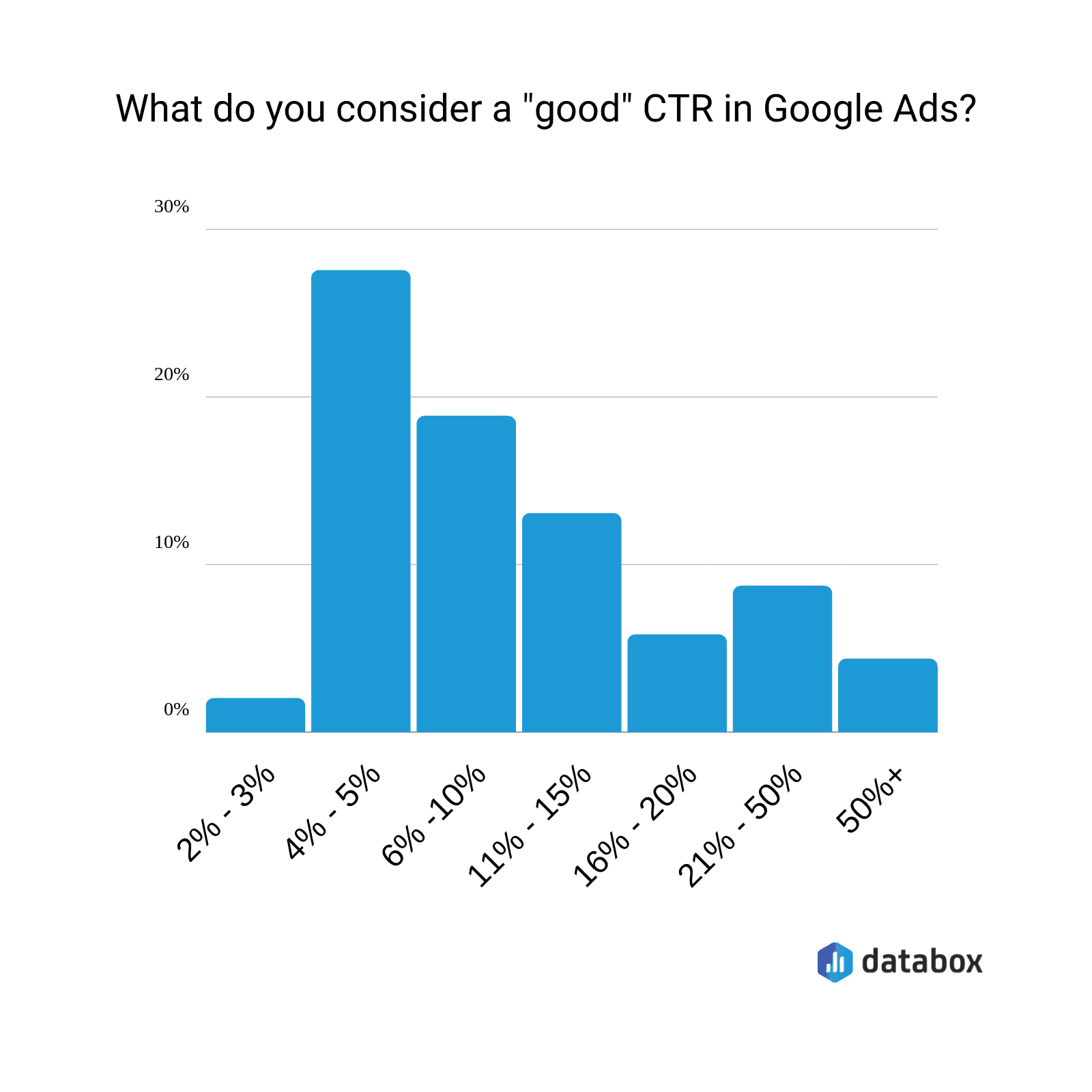
Occasionally, you can find CTRs over 50%, but it’s rare. You’ll only really see that for branded campaigns.
How do you track CTR in Google Ads?
CTR is shown within your Google Ads reporting dashboard.
Find “Keywords” on the left menu and navigate to “Search Keywords.”
If you do not see CTR, click “Column”, and then “Modify Columns”
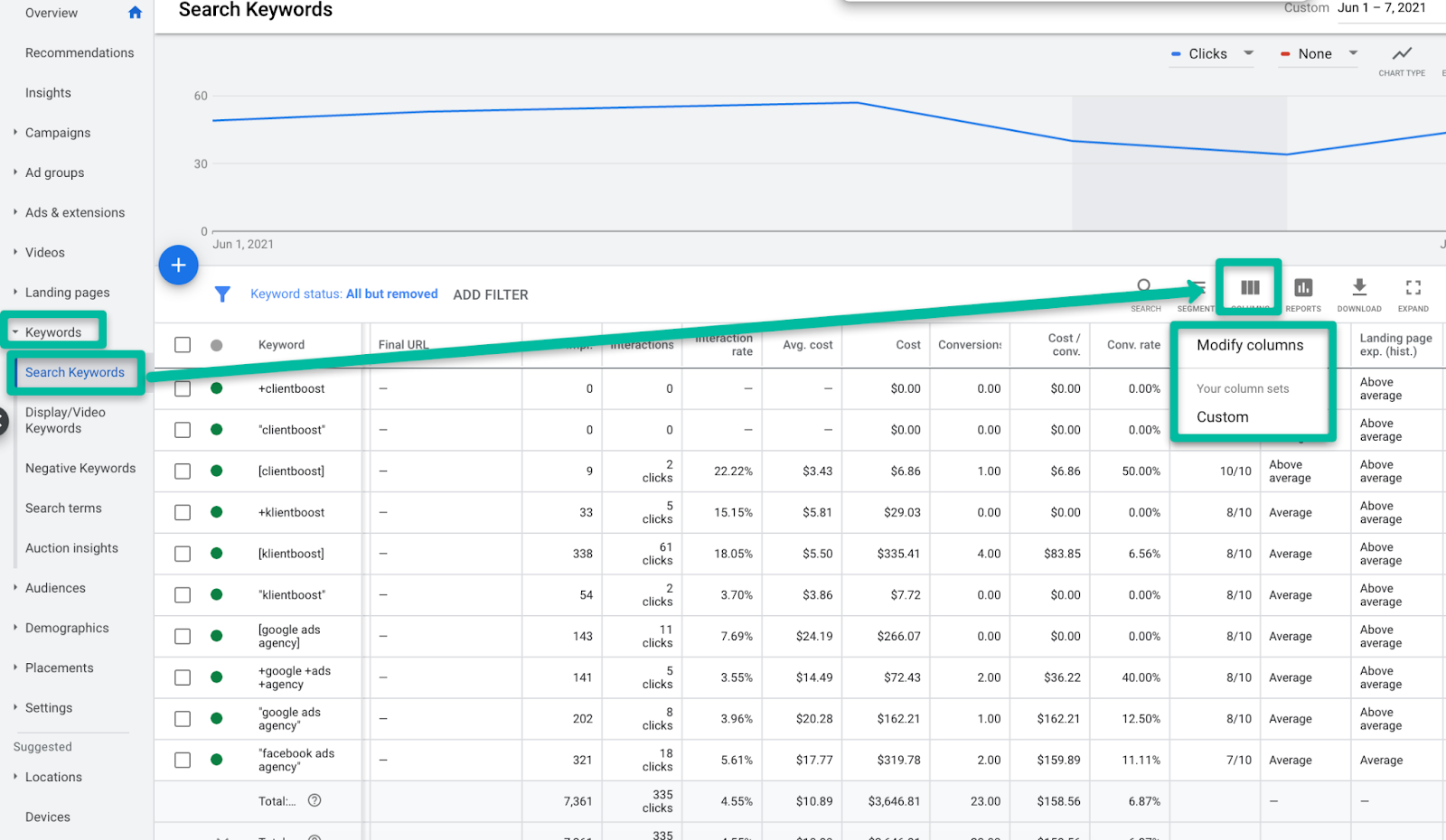
In the search bar type in “CTR” and click and “Apply” to your columns.
Adding CTR to your columns
Once you apply it to your columns you will be able to see the CTR of every keyword you are bidding on.
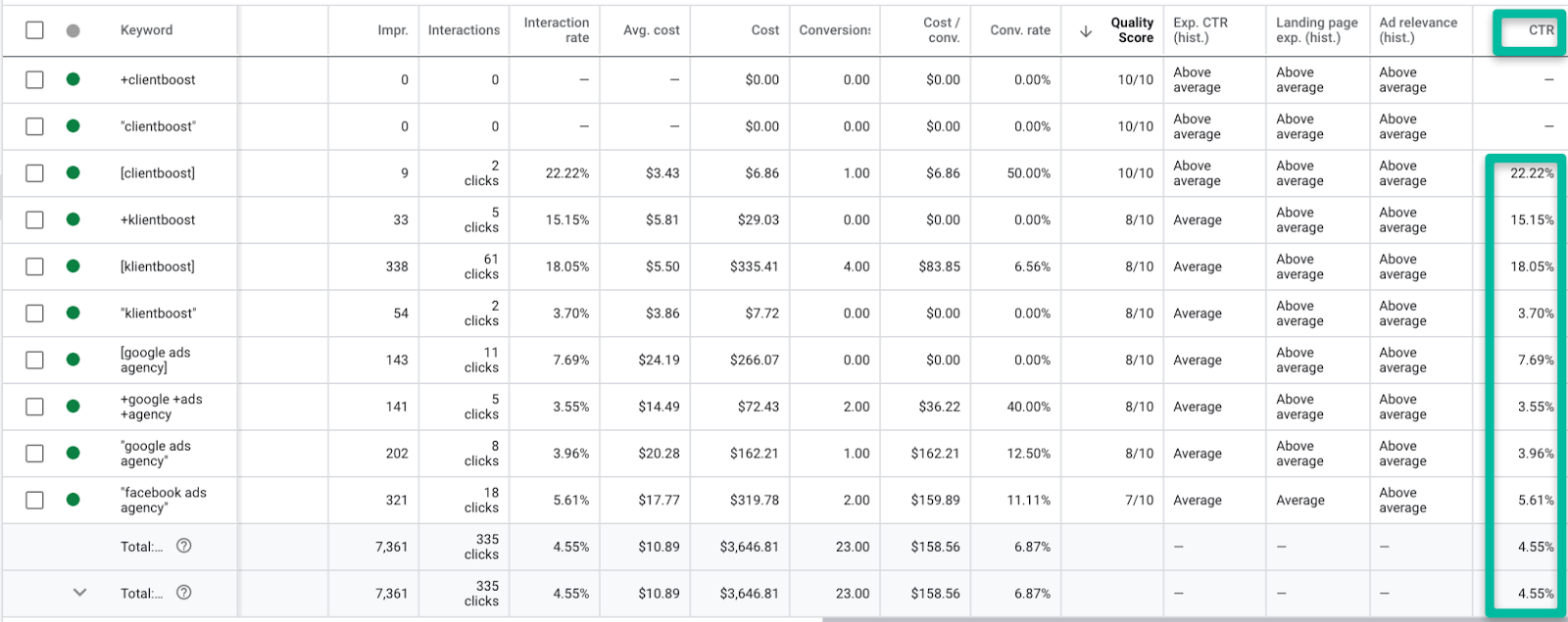
1. Keyword & ad relationship
If you have 20-50 keywords that you think have a “sort of” relevant theme going on, then you’re wrong. Having synonyms and acronyms and abbreviations for what you sell in the same ad group won’t do you any good.
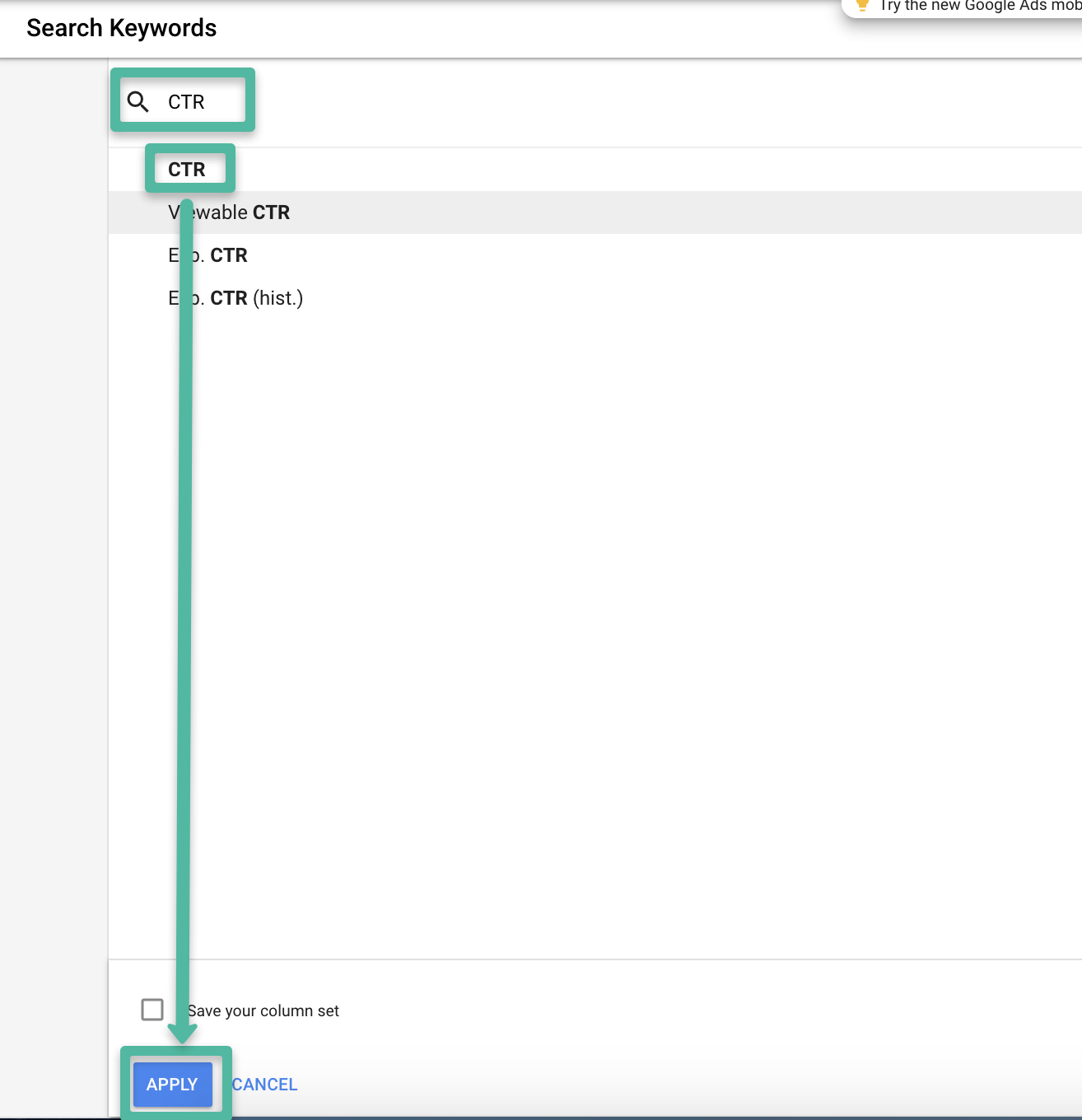
If you’re selling “love sofas” and someone types in “love couches” and your ad says “#1 Super Sexy Love Sofas”, then wouldn’t it make more sense for them to click on the ad that reads “Chocolate Dipped Love Couches” instead?
Hell yeah it would!
One, because the actual keyword is in the ad, and two, everyone loves chocolate.
Everyone.
So start putting individual keywords in their own ad groups with their own unique and relevant ads. This will increase CTR and improve your quality scores.
2. Keywords in your display URL
This tactic can easily be overlooked, appearing to hold no real value.
On the contrary, it actually can help with CTR.
The display URL is technically part of your ad text, but we often see advertisers either leave it blank, or type in the name of their business. Instead, try adding the keyword you’re writing the ad for (hopefully you’ve taken advantage of the SKAGs structure to make this easier) into the URL.
This doesn’t just add more real estate to your ad — it will also help with the oh-so-important relevancy factor.
3. Countdown timers
Countdown timers can go a long way in generating a sense of urgency for a click. There is a visible timer counting down the time to the end of the promotion/sale presented on the ad.
The timer is added to the actual ad by adding the snippet “{=”. You’ll see a pop up that populates where you can choose your start and end date for the timer.
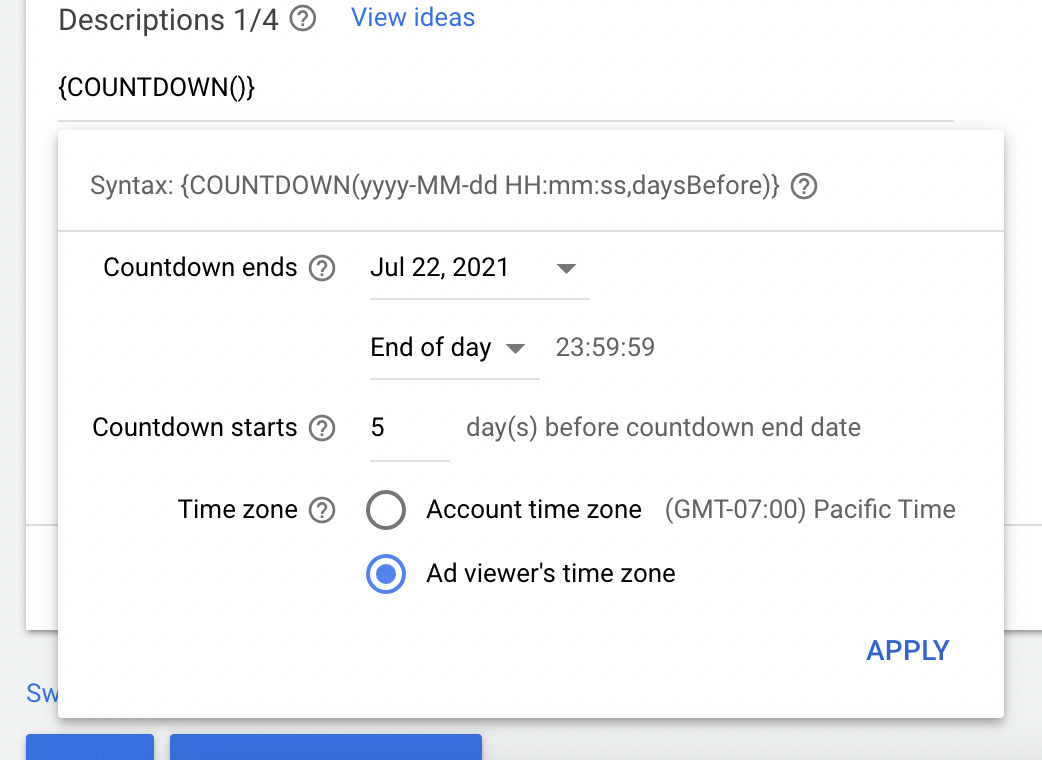
4. Ad extensions
You have a multitude of ad extensions to choose from that can take up valuable real estate space on the search engine results page (SERP). Use these to your advantage and your CTR will increase.
Everyone should use sitelinks extensions, and now you can even beef them up with new features. If you only deal locally, add a location extension with your address so people know where you are before they click your ad. And if you accept phone calls, include a call extension with your ads.
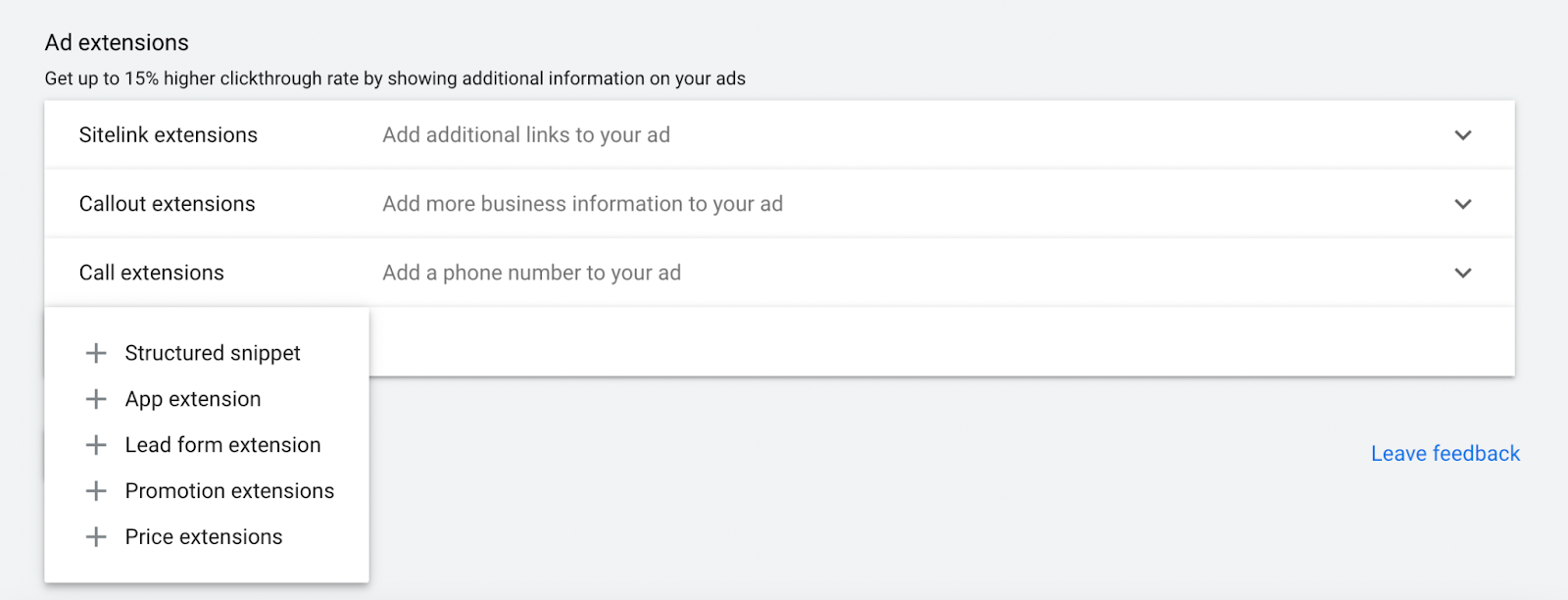
5. ü$é øƒ $¥mBøl$
Anytime you can use symbols that are different from the regular ol’ ABCs, you should do it.
These are ®egistered trademarks, ©opyright, (parentheses), exclamation marks!, dollar $ign$, or anything you can use without having your ad disapproved. Try and test different combinations.
6. Negative keywords
This idea is not only to help increase CTR, but also to stop your wasteful spend on keywords you can’t capitalize on.
Negative keywords are words you add to a specified list to keep searchers who aren’t looking for what you sell from seeing your ad.
Let’s take a couch store for example. Based in California and they only ship within the United States.
If someone types in “couch in London,” you don’t want to waste your money on them.
“London” would be added to your negative keyword list.
Another example would be if someone types in “free couches craigslist”. You or your PPC agency would then add ‘free’ and ‘craigslist’ as negative keywords since you don’t sell them on Craigslist.
Another example for B2B might be adding keywords such as “career” or “job.”
If you’re selling IT software, you don’t want to waste your precious ad dollars on someone just looking for a job in IT.
7. Minimize impressions
While we’re on the topic of negative lists, let’s take it a step further. We discussed examples you might add to a negative keyword list upon setup, but don’t stop there.
You should regularly check your search term report which reveals what actual search queries people are typing in when finding your ads. The report even provides metrics such as impressions and CTR.
Add the keywords with the lowest CTR to your negative keyword list. You may be worried that adding all these seemingly related keywords to a negative list might cause your impressions to drop—you’re right.
That’s a good thing.
Just because there’s a less number of people seeing your ads, doesn’t mean your CTR goes down. Oftentimes makes way for a higher click rate in a great way. It allows you to focus your budget on the search terms that are working.
Quality > Quantity.
On top of that, regularly adding underperforming search queries or terms to negative keywords will keep your relevance score high which raises your Quality Score which keeps your ads position high and lowers your cost per click (CPC).
8. First letter caps
Which ad looks better?
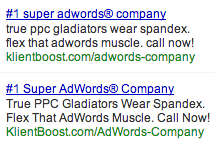
Correkt Grammur Doesn’t Apply Here.
9. Rhythm
Your ad should have rhythm. And if it can, it should be jammin’.
Putting in too many stops, pauses, and questions can hurt the speed of it being read, and in turn, hurt the potential of the click.
Test out having the first description line related directly to the second description line and make it flow.
And then test it out with stops and pauses.
10. Provide value
Turn the tables by letting ad viewers win. Give them a good reason to click. Don’t make the ad solely about you and your services. Make it about your target audience, their problems, and the value you can provide.
Whenever you can provide something of value, do it. It doesn’t matter whether you’re a B2B or B2C, there’s options. Some of our favorites include:
- Coupon or Discount Code
- Checklist/Cheatsheet
- Template
- Competitive Audit
- Quiz
- Video/Video Course
- Toolkit
- Calendar
- Podcast/Interview
- Consultation
- Live Demo
- Tickets
- Email Course
- Physical Product
- Swipe File
- Infographic/Gifographic
- Custom Pricing
- White Paper
- eBook
- T-Shirt
- Industry Stats
- Case Study
If you can draw attention to this value in your ad, clicks will rise.
11. Raising bids
Raising your bid could be the fastest (and costliest) way to increase CTR.
But it may be that one thing you need to do to go from position 11 to position 4. And once you’re there, test out the 13 other ways to boost your click-through rate.
12. Test ad copy
It’s not enough to just have one ad per ad group. How will you ever know if there’s a better ad to be written?
Keep around 3-4 ads per ad group and have them compete against each other to increase CTR.
From here you’ll find insights within the ad platform and even in Google Analytics to get ideas to continue to create winning ads. Pause the lower performing ones and create variations of the winning ads.
13. Go off the deep end
And try some lingo that’s completely out of the ordinary. Be ridiculous.
Try something that’s “unmarketing” and “unadvertising” – Make your ad so stupid that you think no one will click on it, and then look at the results.
You’ll be surprised how your ad can become the elephant in the room very quickly if everyone else is following “the rulebook”.
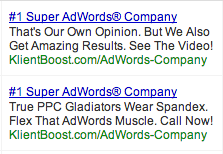
Spandex, baby. Spandex.
(Could it go any other way?)
14. Look at the competition
It’s amazing how often we advertisers forget to do this. Have you seen how your ad looks in relation to others?
Or are you just sitting in your cubicle, hunched shoulders typing away furiously with your greasy hockey puck glasses?
Open your eyes! Explore the world!
And for crying out loud, get some inspiration from your competitors. You don’t have to reinvent the wheel, but damn, don’t be too proud to borrow a good idea here and there.
15. Use calls to action (CTAs)
If you’re vague with your ad, what do you think your potential clicker will do? “Ehhhhh…”
In order to have a highly effective ad (one that actually accomplished the action you want a visitor to take), then you should mention that within the ad.
Calls to action like “Buy Now!” – “Learn More” – “Get Free Info” will direct the visitor to click (because an action is desired) and ultimately aid in the conversion rate as well.
16. Your unique offer
What separates you from everyone else? Do you offer free trials? Private consultations? One-on-one, 24/7 support?
Test out your USP (unique selling proposition) in different ways.
You want to make crystal clear what you have to offer and what sets you apart from competitors. Heck, call them out directly, that works too.
You should have looked at your competitors ads already so you know exactly what not to say. You don’t want to blend in, you want to stand out. Give more than your competitors.
17. Low-to-medium ain’t so bad
We all want the big keywords. The obvious ones you know your target audience is searching. They’re high-traffic, high-intent gold.
But they’re also really competitive and really expensive.
Let the big brands waste their money there. Sometimes the low-to-medium search volume keywords are the best low hanging fruit. They might not get as many impressions, but they can mean a high-quality audience.
Sacrifice the impressions and you might find yourself getting even more clicks than the high impression gold you thought you had.
Impressions, clicks, AND conversions
Low CTR should be a thing of the past. Now that you’re fueled with ideas to capture more clicks, look back at the big picture.
What good are your ads if they’re getting a ton of clicks, but hardly any conversions?
Start making magic by optimizing all the KPIs that work hand in hand with CTR. Optimize all your acronyms. Here’s a few good places to start:
- 12 Best Google Ads Bidding Strategies To Win In 2021
- 10 Google Ads Copy Hacks & 100 Tricks: Data From 100+ Clients
- The Smart Case For Smart Bidding: 5+ Ways To Leverage Machine Learning
- Running A PPC Campaign: 7 Steps To A Successful Launch
- 35 Reasons Why Single Keyword Ad Groups (SKAGs) Always Win
- PPC Keyword Match Types: The Ultimate Guide To Creating A Killer Strategy
- SEO vs PPC: Why Not Work Together?
Let me know in the comments below which CTR tip worked best for you and what strategies you’ll be exploring next.
